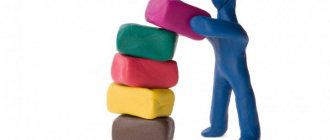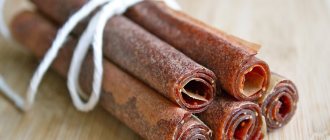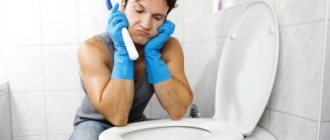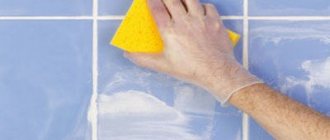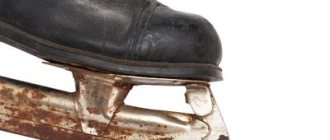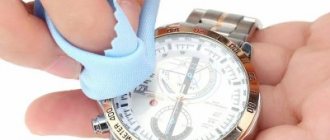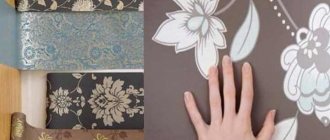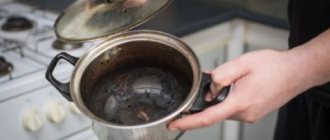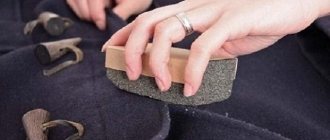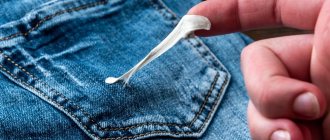The problem of plasticine sticking to the wallpaper is known to young mothers firsthand - at a certain age, children, actively exploring the world around them, try to decorate it in their own way. That is why during such a period it is almost impossible to avoid the appearance of plasticine blots even in the most unexpected places.
In this situation, I really don’t want to resort to a radical method - re-gluing the wall coverings. This is both expensive and time-consuming. We offer you several effective cleaning techniques that will show you how to remove plasticine from wallpaper with the least loss.
Cleaning with improvised means
If you find a trace of plasticine or a bright lump stuck on the wall, you need to act quickly enough.
If the contamination is absorbed into the deep layers, it will be very difficult to cope with the problem, and in some cases it is simply impossible, and you will have to re-glue the damaged panel.
The first step is to remove as much volume as possible, acting extremely carefully.
Household hair dryer
In order to eliminate the mark from the plasticine mass, you can use a hairdryer to warm it up. In addition to this, you will need the following materials:
- highly absorbent wipes;
- water;
- soap.
Operating principle:
The hairdryer switches to heating mode.- The bell of the device is directed from a distance of 10-15 cm to the area with a trace of plasticine. If the damaged area is large, then it needs to be cleaned gradually.
- Warm air will soften the plasticine, and it will be easier to remove it with prepared napkins.
- After the contamination has been removed, the area is washed with soapy water of any concentration. During the processing process, you must try to completely remove all greasy marks.
- Dry the surface of the wallpaper with a hairdryer.
When removing plasticine heated by a hairdryer, the napkins should be replaced very often to prevent smearing.
Freezing
Freezing can help remove the plasticine mass from the wallpaper. If ice is not available, you can replace it with frozen foods.
For processing you need to prepare:
- napkins;
- sharp knife;
- soap and water.
Procedure:
- Apply ice to the stained area so that the plasticine crystallizes and becomes hard.
- Using a sharp knife, carefully remove the plasticine.
- Wash the remaining grease stain with soapy water.
- Dry the surface.
Removing plasticine from wallpaper by freezing with liquefied propane - in the video:
White Spirit
This product is widely used as a cleaner for various surfaces. You can try applying white spirit on wallpaper only after testing.
Moisten a swab or napkin with the preparation and go over the stain with gentle blotting movements.
Vegetable oil
Vegetable oils (olive, sunflower and others), which are always found in the kitchen, can be used to remove colored marks from children's plasticine. This method has its pros and cons.
Procedure:
- Soak a rag or napkin in vegetable oil.
- Apply the product to the stain.
- Scrub the area, working gently with an old toothbrush.
- Wash with soapy water to remove greasy marks.
Washing plasticine with oil from non-woven wallpaper - in the video:
Removal with plasticine
Wallpaper that has a pronounced texture and embossed surface is difficult to clean due to the danger of damaging the voluminous pattern. A technique using white plasticine can help.
The mashed light lump must be pressed to the site of contamination and removed with a sharp movement. It will not be possible to remove all the colored plasticine at once, so the procedure will have to be repeated, each time using a new piece of white plasticine.
After removing the color mass, a greasy mark remains on the wallpaper . Soapy water or using a stain remover that is active against greasy marks will help remove it.
Processing using this method is very painstaking and takes a lot of time. For large stains this method will be ineffective.
Thermal methods
If you don’t know how to remove plasticine from wallpaper, resort to proven technology - temperature changes. Remember that the stuck mass should not be smeared - this will only worsen your situation. It remains to choose between freezing and heat exposure. The last method is good for smooth materials, but not suitable for convex materials. Let's consider both methods in order.
To freeze, you will need ice, a sharp knife, a napkin and soap and water. The operation will consist of several stages. First you need to pour water into a special mold and place it in the freezer. Armed with an ice cube, proceed as follows:
- Place the cold cube on the plasticine.
- Make sure the goo has hardened.
- Pry off the hard cake with a knife.
- After this, you need to scrub the stain with a sponge soaked in soapy water (wring it out well).
- If the wallpaper is resistant to moisture and damage, you can connect a brush.
Another technique that allows you to quickly remove contamination is heat treatment. You will need paper napkins and an iron. For smooth wallpaper, it is better to use a hair dryer. Napkins must be dry and clean. Now we will tell you how to remove plasticine from wallpaper using a thermal method:
- Turn on the hairdryer and direct the hot stream onto the plasticine mark.
- When the mass melts, begin to wipe off the polymer with napkins.
- If there are large lumps, you should knock them out with a knife in advance.
- Change napkins when they become dirty (you need to do this constantly).
- As a result, you should be left with a greasy residue.
- We traditionally remove the remaining stains using a sponge and soap solution.
An important point: you cannot clean the wall with newspapers or magazine sheets. Printing ink will be imprinted on the surface. To remove grease stains (the final stage), you should use laundry soap. After this, the wallpaper is dried with a hairdryer.
Application of special chemistry
The plasticine mark is a greasy colored stain. Even if the sticky mass was removed from the wallpaper very quickly, the mark may remain. You can use special preparations to remove stains.
Expert stain remover, fats and sauces Dr. Beckmann
Under TM Dr. Beckmann produces a large range of targeted products that allow you to remove a certain type of contaminant with the highest quality possible. The “Fats and Sauces” stain remover can handle greasy stains.
Thanks to the inclusion of a combination of surfactants, the drug breaks down fats, as a result of which the stain disappears. Apply the product undiluted with blotting movements to the contaminated area. The price of a 50 ml bottle is up to 200 rubles. Read reviews here, here and here.
Axiom Foam interior cleaner
Axiom is a cleaner designed for treating car interiors . But it can also be used to remove plasticine from wallpaper and other surfaces.
The drug contains alcohol, various special additives, aliphatic hydrocarbons, etc. The cleaner is applied directly from the bottle to the stained area.
Car chemicals used to clean the interior can damage the wallpaper, so preliminary testing of it on an inconspicuous fragment of the surface is a prerequisite. Price – about 200 rubles for 800 ml.
Vanish Gold Oxi Action
Oxygen-containing stain remover should be used diluted in the following proportion:
- 5 tbsp. l. water;
- 1 tbsp. l. powder.
The product is stirred until smooth and applied only when the granules are completely dissolved. It is convenient to carry out the treatment with an old toothbrush.
After removing the trace, the remaining product is washed off with clean water, and the surface of the wallpaper is dried with a hairdryer. Cost – 660 rubles per plastic container. Read reviews here, here and here.
What and how can you quickly remove traces of plasticine from wallpaper?
Small children are capable of a wide variety of inventions and experiments, so the question of how to remove plasticine from wallpaper does not even come as a surprise to most mothers. So that the problem does not take you by surprise, it is worth familiarizing yourself in advance with possible options for solving it.
Ideally, it is recommended to give your child a small area on the wall where he can realize his creative ideas, then the rest of the room will not have to be cleaned. If a minor accident does happen, there is no need to panic; even at home you can find remedies that will make it possible to restore everything.
How to clean different types of coating?
When choosing a surface cleaning method, it is necessary to take into account the type of wallpaper and the texture of the material. The easiest way is to remove the plasticine and clean the base from the following wallpaper:
- vinyl;
- non-woven;
- liquid;
- acrylic.
Textile surfaces are more difficult to clean, since such wallpaper is recommended to be cleaned only dry. Paper wallpaper is also difficult, since its surface is very easily damaged. Therefore, cleaning is carried out only in one direction, and without the use of force.
Paper
The surface of paper wallpaper is smooth, but very demanding in terms of cleaning methods. If handled carelessly and intensively, this coating is easily damaged.
Methods of influence:
- It is better to carefully scrape off the bulk of the plasticine with a plastic scraper.
- The remaining creative product should be collected using the hairdryer method.
- Soap solution and stain removers can be used very limitedly, avoiding over-wetting the paper.
Washable
To process thick washable wallpaper, you can use any of the above methods. The surface texture and type of finish should be taken into account, for example, contrasting patterns, the presence of sparkles, etc.).
Textile
If the surface of the wallpaper cannot be treated wet, it should be cleaned without using water. To bring an expensive coating back to normal condition, it is better to contact a cleaning company , entrusting the processing to professionals.
Chemical method for removing plasticine
Plasticine can also be treated with a regular solvent. According to housewives, white spirit would be a good option. But products for removing stains from clothes are too harsh and expensive, and should be abandoned. In addition to white spirit, you may find the following useful:
In general, a solvent is considered a last resort. Such substances remove stains from sealant or paint. If your wallpaper is highly sensitive, white spirit can harm its color and even structure. Treatment is carried out using a cotton swab, which is moistened with a solvent. Now you know how to remove plasticine from wallpaper chemically
Proceed with extreme caution
Source
Features of cleaning depending on the type of material
For each type of wall covering, not only the service life, but also the maintenance conditions vary. If you were unable to stop the activity of young pranksters, then you should approach responsibly the method of restoring the appearance of walls covered with this material.
Embossed
Cleaning plasticine from embossed wallpaper will cause you a number of difficulties, because even from any friction the sprayed pattern will be subject to deformation. To avoid this, it is best to use a white piece of craft material. They need to pull out the “stucco molding”, making sharp movements.
As a last resort, you can use a hairdryer, but you should be prepared for the fact that the relief will become less convex, and the place of contamination will stand out against the general background.
Smooth
With smooth wallpaper everything is much simpler - even after mechanical action with a scraper, the texture will not change in appearance. Therefore, for this type of coating, any of the above methods can be used.
Paper
It will be problematic to remove the stain from paper wallpaper, because the wax contained in the plasticine will be actively absorbed into it, leaving a greasy stain. And due to the fairly thin fabric, the manipulations performed can create a noticeable mark.
You can also remove plasticine in any way, but removing greasy stains requires special delicacy. Do not rub the surface vigorously to avoid fading the design. The best solution for removing stains is ammonia or Fairy.
In the case of paper wallpaper, you can also use your grandmother’s method. A piece of bread crumb absorbs this kind of dirt quite well.
To achieve the effect, it is recommended to either press it firmly onto the damaged area or lightly rub it. The main thing in the latter case is to make movements exclusively in one direction.
Non-woven, vinyl, acrylic
Such wallpapers are less sensitive to external influences, and some of them are washable. You can get rid of any kind of stains on these surfaces without any problems.
To do this, you need to remove the material protruding above the surface, and then wipe it with a cloth or, if necessary, first use an iron, ice or other means.
Glass wallpaper, metal and liquid
Fiberglass wallpaper differs from its “brothers” in its increased density, which is why any of the listed cleaning options can be applied to them without fear.
The same applies to wallpaper based on metal or liquid components. The last type is decorative plaster, which lies on the walls in a dense layer and, in fact, bears little resemblance to the usual coating.
You will have virtually no problems removing stains from them - the surface is quite resistant even to moisture. However, the difficulty will be the accumulation of small particles of plasticine on the rough texture. A soft brush will help get out of the situation.
Natural/textile
But with natural wallpaper everything is much more complicated. Only dry cleaning is acceptable for them, so residual greasy stains can only be removed with medical talcum powder, baby powder or food starch.
Photo wallpaper
Again, we can use any method for this wallpaper, but you should carefully wipe off the traces of plasticine so as not to erase the design.
Cleaning various surfaces
After children's creativity, plasticine can be seen on rugs, wallpaper, toys and various plastic surfaces. You can also easily wipe off the plastic mass from them.
So, there are several methods on how to clean carpet from plasticine:
- Place a paper napkin on the stain and iron it with a warm iron. The remaining greasy mark can be washed off with a sponge soaked in detergent. To remove moisture, wipe the area with a dry cloth.
- The plasticine should be removed with the blunt side of a knife, a cotton pad should be moistened with kerosene and the stain should be wiped. Remove traces of kerosene using a sponge soaked in soapy water. Use a towel to remove excess water.
Wallpaper also quite often bears traces of plasticine. And if paper products cannot be cleaned without damage, then non-woven and vinyl products are very possible. There are two ways to deal with contamination:
- A paper towel is applied to the contaminated area, onto which a stream of warm air is directed from a hairdryer. The paper is removed after it is saturated with plasticine. The remaining stain is wiped with a sponge, which is moistened with water with the addition of soap or dishwashing detergent. After which the area is wiped dry.
- You can take a piece of white plasticine and stick it on the one that is on the wallpaper. Then sharply tear it off. The procedure must be repeated until all the sticky mass has “moved” from the wall to the white plasticine. After this, wash the area with a soapy sponge and dry with a towel or rag.
Quite often the problem arises of how to wash plasticine from plastic. It's not difficult at all. Often it is enough to wipe the surface with a damp cloth. You can also soak a cotton pad in sunflower oil and treat the plastic, and then wipe off the greasy stain with soapy water.
Often toys take an active part in the creativity of their little owners. And of course, they need washing. Thus, plasticine from soft toys can be cleaned using the same methods as from fabrics, taking into account their color and the material from which they are sewn. After cleaning, large toys can be washed by hand, while small ones can be placed in a special laundry bag and placed in the washing machine. But you need to remember that liquid laundry detergents are washed out of fabrics better than powders.
After washing soft toys, you need to decide how to wash the plasticine from the plastic. After all, in the children's room there are probably many cars or dolls made of this material. Plastics are washed, like plastic, using wet wipes or sunflower oil. But after exposure to oil, toys must be washed in soapy water.
Removal rules and precautions
Having discovered pieces of plasticine on clothes or other surfaces, some people resort to improvised methods to eliminate them. And they do not always help to wash away plasticine traces; sometimes with their help you can only aggravate the situation:
- Do not try to wipe off lumps with a dry or damp cloth, as this will only increase the area of contamination.
- If you intend to use products containing alcohol or any detergents, you first need to test their effect on a small area of the soiled material.
- Under no circumstances should you remove plasticine lumps from your hair with your hands. This can only spread the mass along its entire length.
- And you should not wash the stain without pre-treatment, otherwise you can completely ruin the item.
- There are several ways to remove this material from various surfaces. But they all start from the same stages.
- At the beginning of work, you should remove lumps using a stack, which comes standard with plasticine.
- After mechanical impact, you need to clean the oily trace.
- And at the end of the work, clean the surface in any convenient way.
Tips for parents
Children love to experiment. The results of children's creativity remain in the form of plasticine animals, flowers, and cars stuck to the surface.
To avoid problems with cleaning wallpaper, you need to take care of methods to prevent it:
- Create favorable conditions for sculpting. After each lesson, clean the board and table in a simple way: Crumple a regular napkin or piece of toilet paper in your hands.
- Rub the modeling board and the children's table with it, changing the paper ball 5-6 times.
If due to an oversight, plasticine ends up on the wallpaper, remove it immediately. This will save you from the grueling scrubbing of greasy marks deeply ingrained into the structure.
How to remove plasticine stains from wallpaper correctly
There are several ways to clean wallpaper from plasticine:
- Hot;
- Cold;
- Chemical;
- Helpful.
Let's look at everything in order:
Method #1: hot
Let's start with how to remove plasticine from wallpaper using the “hot” method:
The main thing is to melt the plasticine, after which you can simply wipe it with a napkin
Photo Description
We prepare the necessary accessories for removing plasticine traces:
Hairdryer;
Set of napkins. The larger the problem, the more of them will be needed;
Water and soap.
Depending on the relief of the finish, we proceed as follows:
From flat wallpaper, carefully cut off the top of the pasted plasticine;
We peel it off from textured canvases by applying a larger piece of similar material. This will keep the texture of the cladding intact;
Blow the entire stained area or just a part, depending on its size, with a hairdryer
A stream of hot air will melt the plasticine mass.
Carefully collect the melted material with a napkin. As soon as it becomes dirty, we replace it with a new one.
We repeat the procedure with a hairdryer and a napkin until slightly greasy stains remain instead of plasticine.
Mix the soap solution;
Use it to wash away any remaining greasy stains with your own hands.
Dry any remaining moisture on the wallpaper with a hairdryer.
It is worth noting that instead of a hair dryer, you can also use an iron, after covering the problem area with a paper napkin.
Method #2: cold
In this case, the props for fighting plasticine change somewhat; you will need:
Ice;
If you have fruit in your freezer, you won't need clean ice.
- Sharp knife;
- Water, soap and napkin.
The instructions look like this:
- Apply ice or frozen food to the problem area. Lowering the temperature leads to crystallization of plasticine;
- We pick it out with a sharp knife;
- Wash off the remaining greasy stain with a soap solution. It is noteworthy that with paper wallpaper you need to be extremely careful, using a paper napkin, but washable non-woven or vinyl wallpaper can even be rubbed with a brush to obtain a better result.
Method No. 3: chemical
Going to the store and simply purchasing a suitable product for removing plasticine stains from wallpaper is another solution to the problem, which, however, has two disadvantages:
- Relatively high price. Using the same ice or hair dryer mentioned above is still cheaper;
- Risk of damage to the finishing surface. Some substances can ruin the appearance of wallpaper or even make a hole in it.
The following compositions are suitable for the implementation of the plan:
Car cleaners. As an example, consider Axiom:
| Parameter | Meaning |
| Manufacturer country | Russia |
| Volume | 0.8 l |
| Compound |
|
| Price | 200 rubles |
Axiom, which copes with cleaning car interiors, is able to defeat plasticine on wallpaper
Stain removers. As an example, consider Vanish Gold Oxi Action:
| Parameter | Meaning |
| Manufacturer country | Russia |
| Weight | 500 g |
| Compound |
|
| Price | 290 rubles |
Vanish Gold Oxi Action can remove stains from more than just clothes if used correctly
White Spirit. A half-liter bottle of this product costs about fifty rubles.
White spirit is a fairly inexpensive, but at the same time dangerous cleaning agent for wallpaper.

